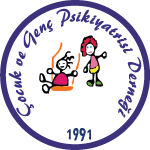ABSTRACT
Objectives:
The aim of the study was the evaluation the data of patients with early onset schizophrenia (EOS) within the scope of the Revolving Door Phenomenon (RDP).
Materials and Methods:
Data obtained from three child and adolescent psychiatry inpatient services in Turkey were retrospectively evaluated and sociodemographic characteristics, psychiatric comorbidities, treatment modalities, pre- and post-treatment assessments of the patients were assessed with the Positive and Negative Syndrome Scale (PANSS) and Children’s Global Assessment Scale (CGAS). Patients with more than one hospitalization within 18-60 months of follow-up from the admission to the study were evaluated, and patients with two or more hospitalizations were accepted as RDP (+).
Results:
Between RDP (+) (n=40) and RDP (-) (n=35) groups, a significant difference was found when only history of substance use disorder (p=0.007) was compared in terms of sociodemographic variables. When the psychotropic drugs used during their hospitalization were compared between the two groups, differences were found in terms of haloperidol (p=0.001) and First Generation Antipsychotics (FGA) (p=0.011). The findings showed a significant interaction between the number of hospitalizations of patients with 18-60-month follow-up defined for total PANSS hospitalization scores (p= 0.044) and CGAS scores (p=0.006). In the regression analyses, it was found that the history of substance use disorder, FGA use and total PANSS scores of hospitalization were significant predictive factors for RDP in patients with EOS.
Conclusion:
In our study, findings suggest that personalized strategies focusing on early identification of clinical dimensions, evaluation of substance use disorder history, and treatment management of cases may help reduce the effects of RDP.
Keywords:
Early onset schizophrenia, revolving door phenomenon, antipsychotic, disease severity, inpatient service
References
1World Health Organization (WHO). International classification of functioning and disability and health (ICF). Switzerland, WHO, Geneva, 2001.
2Werry JS. Child and adolescent (early onset) schizophrenia: a review in light of DSM-III-R. J Autism Dev Disord. 1992;22:601-24.
3Coulon N, Godin O, Bulzacka E, Dubertret C, Mallet J, Fond G, Brunel L, Andrianarisoa M, Anderson G, Chereau I, Denizot H, Rey R, Dorey JM, Lançon C, Faget C, Roux P, Passerieux C, Dubreucq J, Leignier S, Capdevielle D, André M, Aouizerate B, Misdrahi D, Berna F, Vidailhet P, Leboyer M, Schürhoff F. Early and very early-onset schizophrenia compared with adult-onset schizophrenia: French FACE-SZ database. Brain Behav. 2020;10:e01495.
4Gochman P, Miller R, Rapoport JL. Childhood-onsetschizophrenia: thechallenge of diagnosis. Curr Psychiatry Rep. 2011;13:321-322.
5Remschmidt H, Theisen F. Early-onset schizophrenia. Neuropsychobiology. 2012;66:63-69.
6Daly A, Tedstone Doherty D, Walsh D. Reducing the revolving door phenomenon. Ir J Psychol Med. 2010;27:27-34.
7Ko Y, Park S. Life after hospital discharge for people with long-term mental disorders in South Korea: Focusing on the “revolving door phenomenon”. Perspect Psychiatr Care. 2021;57:531-538.
8Jeppesen RM, Christensen T, Vestergaard CH. Changes in the utilization of psychiatric hospital facilities in Denmark by patients diagnosed with schizophrenia from 1970 through 2012: The advent of ‘revolving door’ patients. Acta Psychiatr Scand. 2016;133:419-425.
9Di Lorenzo R, Sagona M, Landi G, Martire L, Piemonte C, Del Giovane C. The Revolving Door Phenomenon in an Italian Acute Psychiatric Ward: A 5-Year Retrospective Analysis of the Potential Risk Factors. J Nerv Ment Dis. 2016;204:686-692.
10Roick C, Heider D, Kilian R, Matschinger H, Toumi M, Angermeyer MC. Factors contributing to frequent use of psychiatric inpatient services by schizophrenia patients. Soc Psychiatry Psychiatr Epidemiol. 2004;39:744-751.
11Botha UA, Koen L, Joska JA, Hering LM, Oosthuizen PP. Assessing the efficacy of a modified assertive community-based treatment programme in a developing country. BMC Psychiatry. 2010;10:73.
12Hung YY, Chan HY, Pan YJ. Risk factors for readmission in schizophrenia patients following involuntary admission. PLoS One. 2017;12:e0186768.
13Hermann RC, Mattke S, Somekh D, Silfverhielm H, Goldner E, Glover G, Pirkis J, Mainz J, Chan JA. Quality indicators for international benchmarking of mental health care. Int J Qual Health Care. 2006 Sep;18(Suppl 1):31-8.
14Durbin J, Lin E, Layne C, Teed M. Is readmission a valid indicator of the quality of inpatient psychiatric care? J Behav Health Serv Res. 2007;34:137-150.
15Kalseth J, Lassemo E, Wahlbeck K, Haaramo P, Magnussen J. Psychiatric readmissions and their association with environmental and health system characteristics: a systematic review of the literature. BMC Psychiatry. 2016;16:376.
16deMoura EC, Venturini F, Bastos PAS, Martins LC, Fragoso YD. “Revolving Door” In Psychiatric Units Seems To Remain a Common Phenomenon in the 21st Century. J Psychiatry Depress Anxiety. 2017;3:008.
17Shaffer D, Gould MS, Brasic J, Ambrosini P, Fisher P, Bird H, Aluwahlia S. A children’s global assessment scale (CGAS). Arch Gen Psychiatry. 1983;40:1228-1231.
18Kay SR, Fiszbein A, Opler LA. The positive and negative syndrome scale (PANSS) for schizophrenia. Schizophr Bull. 1987;13:261-276.
19Kostakoğlu E, Batur S, Tiryaki A, Göğüş A. Pozitif ve negatif sendrom ölçeğinin (PANSS) Türkçe uyarlamasının geçerlik ve güvenirliği. Türk Psikoloji Dergisi. 1999;14:23-32.
20Morlino M, Calento A, Schiavone V, Santone G, Picardi A, de Girolamo G; PROGRES-Acute group. Use of psychiatric inpatient services by heavy users: findings from a national survey in Italy. Eur Psychiatry. 2011;26:252-259.
21Clark RE, Samnaliev M, McGovern MP. Impact of substance disorders on medical expenditures for medicaid beneficiaries with behavioral health disorders. Psychiatr Serv. 2009;60:35-42.
22Herbeck DM, Fitek DJ, Svikis DS, Montoya ID, Marcus SC, West JC. Treatment compliance in patients with comorbid psychiatric and substance use disorders. Am J Addict. 2005;14:195-207.
23Setoya Y, Saito K, Kasahara M, Watanabe K, Kodaira M, Usami M. Evaluating outcomes of the child and adolescent psychiatric unit: A prospective study. Int J Ment Health Syst. 2011;5:7.
24Filipcic I, Simunovic Filipcic I, Ivezic E, Matic K, Tunjic Vukadinovic N, VukPisk S, Bodor D, Bajic Z, Jakovljevic M, Sartorius N. Chronic physical illnesses in patients with schizophrenia spectrum disorders are independently associated with higherrates of psychiatric rehospitalization; a cross-sectional study in Croatia. Eur Psychiatry. 2017;43:73-80.
25Burns T. Hospitalisation as an outcome measure in schizophrenia. Br J Psychiatry Suppl. 2007;50:s37-41.
26Werneck AP, Hallak JC, Nakano E, Elkis H. Time to rehospitalization in patients with schizophrenia discharged on first generation antipsychotics, non-clozapine second generation antipsychotics, or clozapine. PsychiatryRes. 2011;188(3):315-9.
27Haywood TW, Kravitz HM, Grossman LS, Cavanaugh JL Jr, Davis JM, Lewis DA. Predicting the “revolving door” phenomenon among patients with schizophrenic, schizoaffective, and affective disorders. Am J Psychiatry. 1995;152:856-861.



